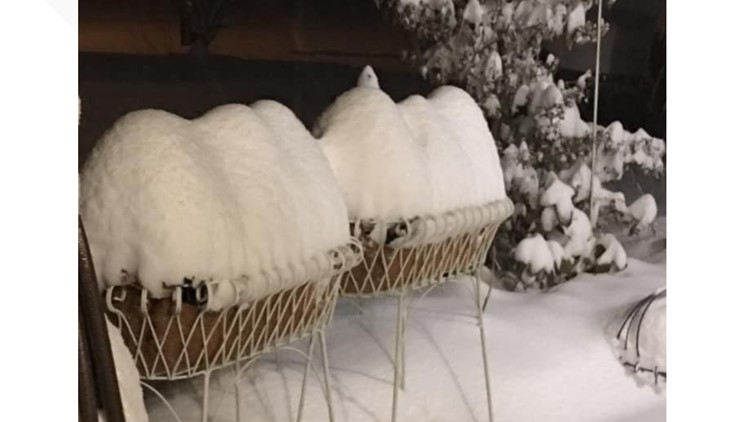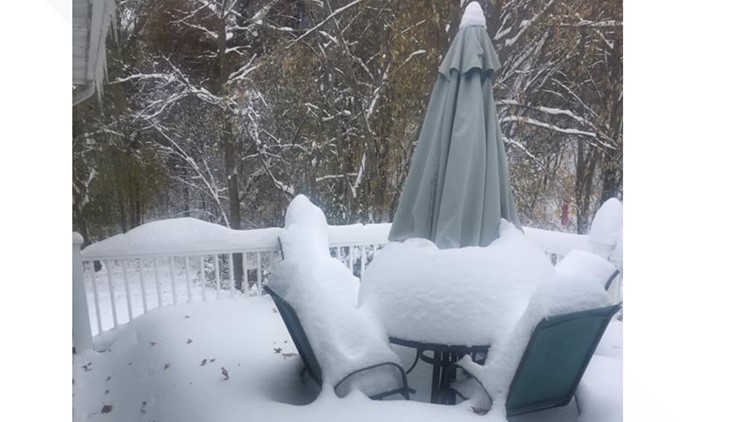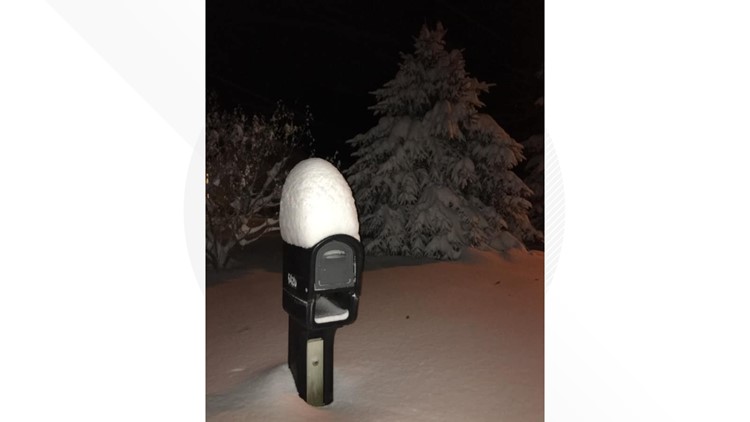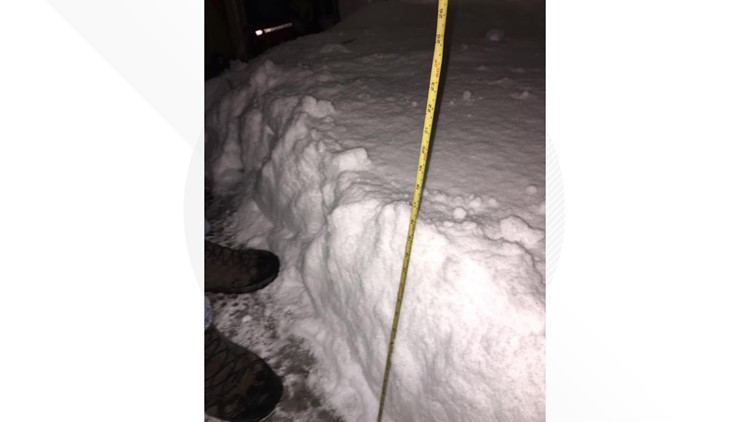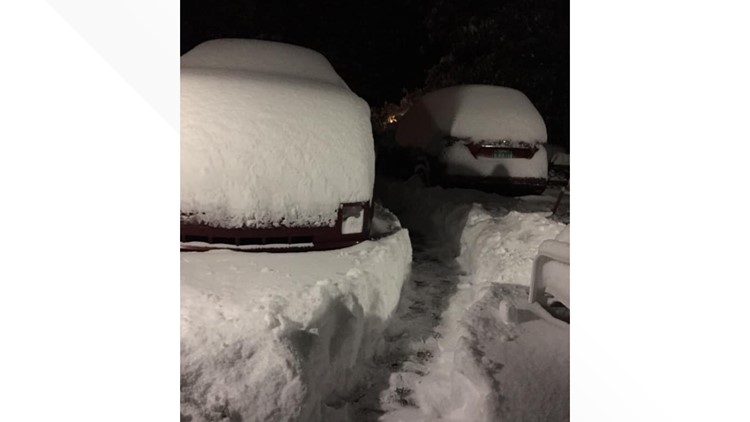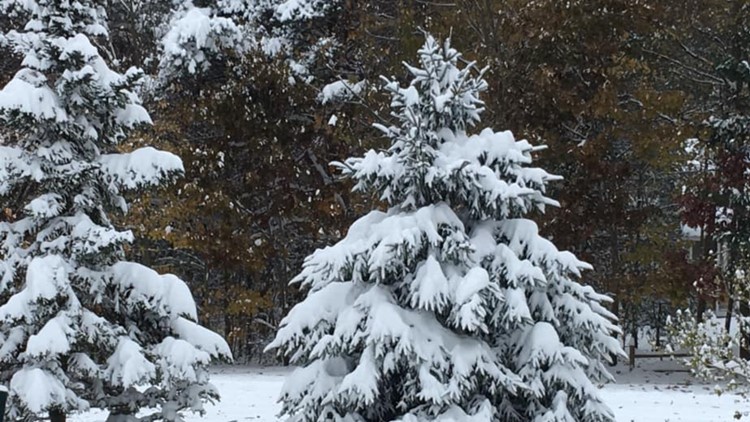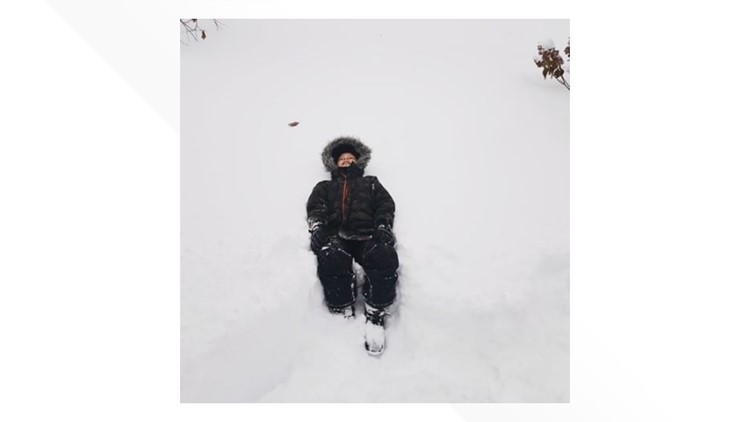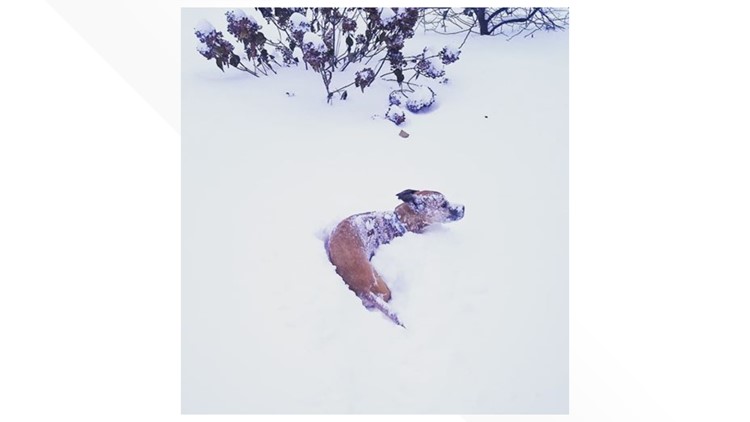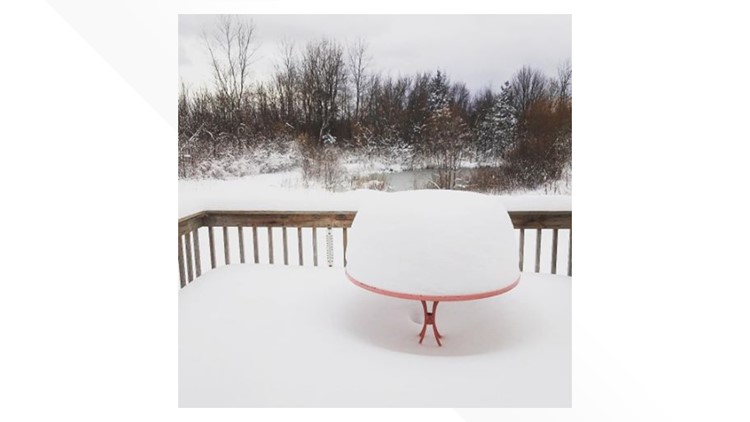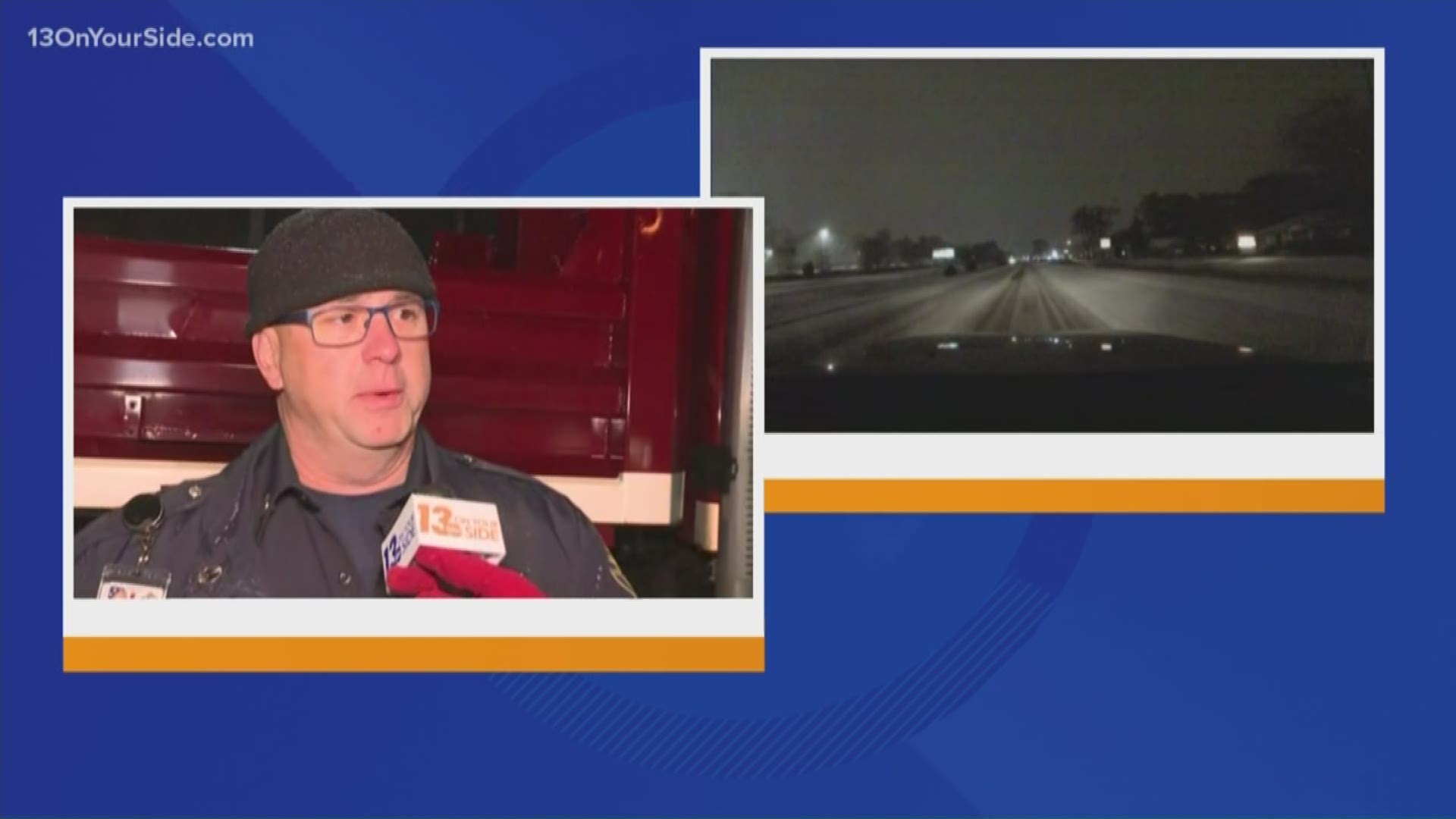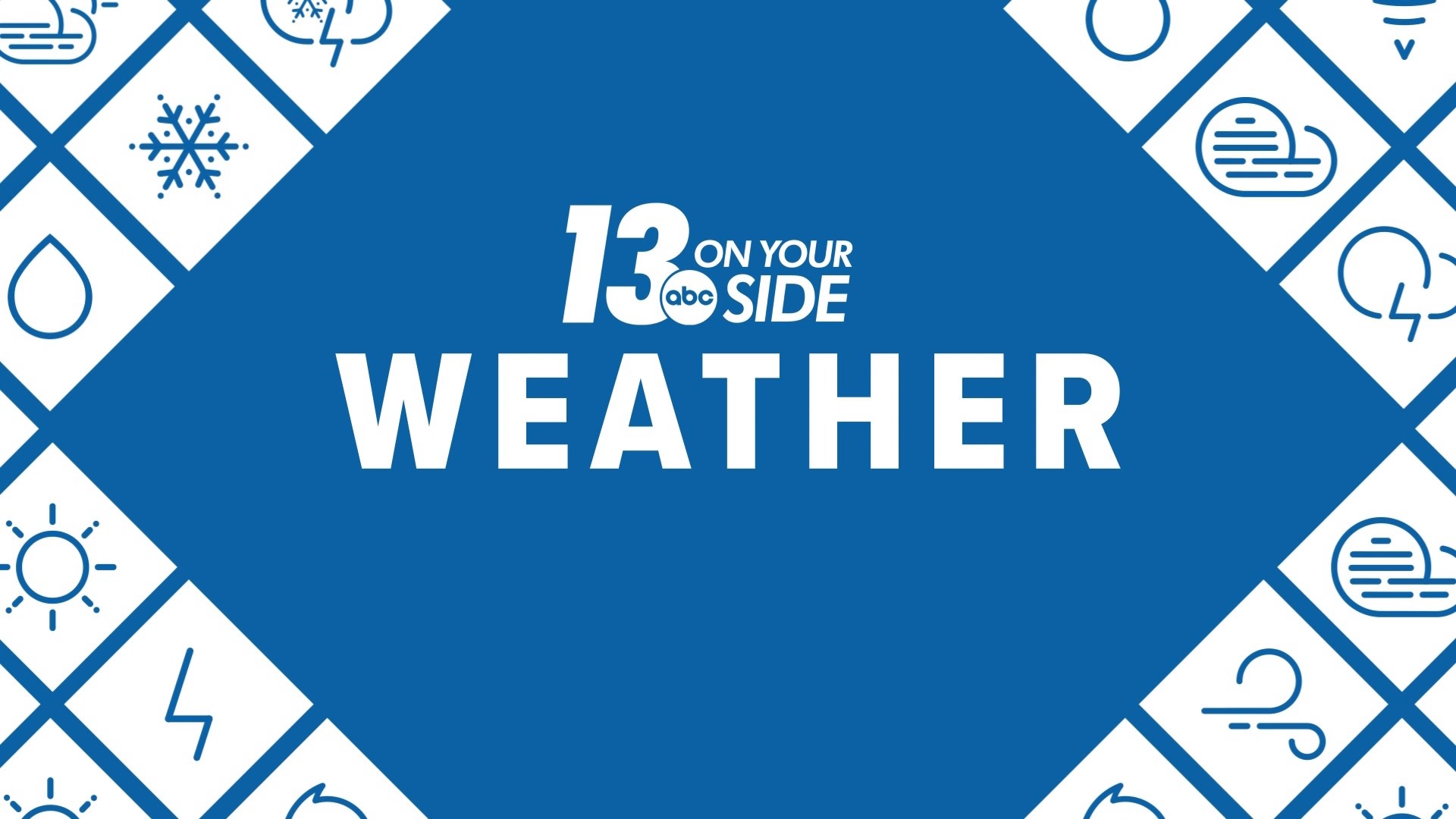ALLEGAN COUNTY, Mich. — A narrow strip of West Michigan is reporting double digits of snow accumulation.
Breezy northwest winds produced snowfall rates of 1-2 inch per hour for many counties along the Lake Michigan shoreline. The heavy snow event has carried on for roughly 12 hours and the snow is still falling.
A few of the hardest hit areas are reporting close to two feet of fresh powder and some county road commissions are asking people to stay off the roads until the snow lets up.

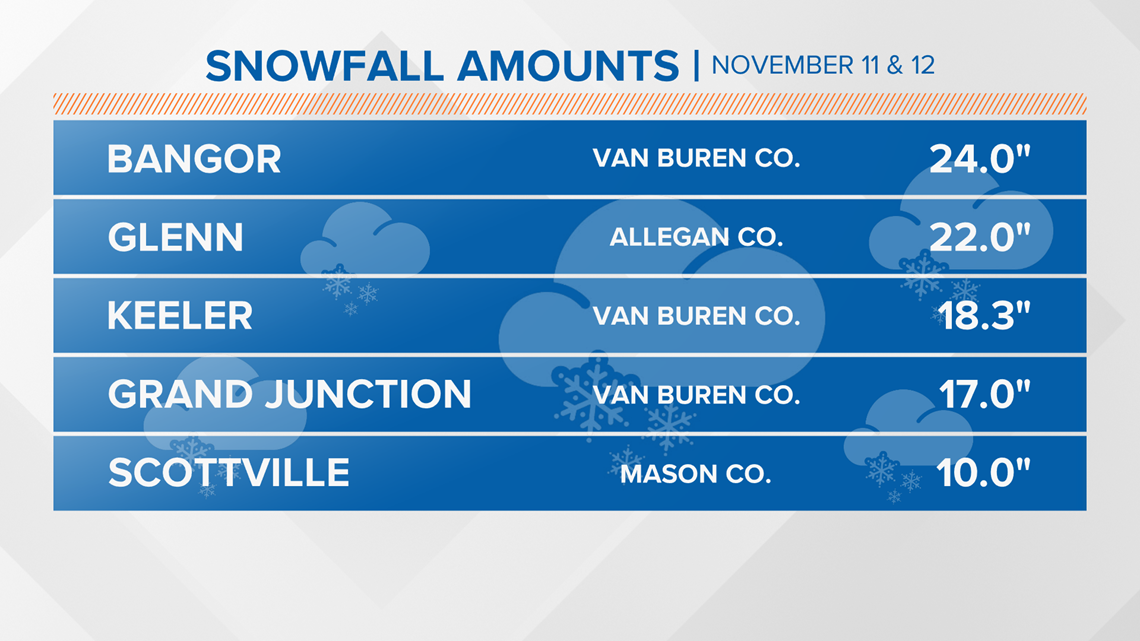
Related: Have photos to share? Click here!
West Michigan is no stranger to snow in November. Through the middle of the month, average accumulations in Grand Rapids are closer to an inch or two. But totals like this are more commonly seen in the Upper Peninsula.
Bands of lake-effect snow will continue to dump a few more inches on already buried communities through Tuesday afternoon. Relief will finally arrive as winds begin to shift Tuesday evening. It will remain quite cold with lows falling into the teens but lake-effect snow should taper off after sunset.
Blue Cross Blue Shield of Michigan has some safety tips when you're outside shoveling off your driveway or digging out your car.
- Snow shoveling is exercise: The average shovelful of heavy, wet snow weighs 16 to 20 pounds. That means for every 10 minutes of typical shoveling, you’ll be clearing more than 2,000 pounds. For many Americans who live a sedentary lifestyle, shoveling heavy, wet snow for 10 minutes is the same as running on a treadmill to the point of exhaustion. Studies show major snow storms are often associated with increased emergency room visits for everything from muscle aches to heart attacks and the common denominator is snow shoveling.
- Cold air makes breathing difficult: Cold air constricts blood vessels and decreases the flow of oxygen to the heart – which can heighten the risk of heart attack. Even in people who don’t have a history of blood pressure problems can experience a sudden increase in blood pressure and heart rate in cold air.
- Shovel smarter, not harder: Snow shoveling is one of the most common causes of back injuries in the winter. Push or pull snow out of the way instead of lifting it whenever possible. Fresh snow is usually lighter, so remove it as soon as possible. If the snow is heavy and wet, skim off the top layer before moving the bottom layer.
- Use ergonomic lifting techniques: Squarely face the object you are lifting. First bend at the hips, pushing your chest out, then bend our knees and lift with your leg muscles while keeping your back straight. Keep one hand as close to the shovel blade as possible, and the other hand about 12 inches away on the shovel handle. Keep the full shovel as close as possible to your center of gravity. Do not twist the back or throw snow. Walk to the new location and squarely face your body in the direction you are depositing the snow.
- Choose the right snow removal option for you: Smaller shovels help minimize the load you’re lifting. Those with ergonomic “S“-shaped handles and non-stick blades minimize the chance of back pain. Consider investing in a snow blower or paying for a snow removal service if shoveling is not an option for you, or if you are responsible for clearing a large area.
- Take breaks: Break up the time spent shoveling to head inside, hydrate, rest and warm up every 15-20 minutes. Go slow, and ease into the work to avoid a sudden load on your heart.
- Dress for the occasion: Wear lightweight, warm layers, making sure to cover the neck, mouth and nose in the coldest conditions to protect your lungs and to prevent heat from escaping. Wear a hat, scarf, mittens, a face mask and/or goggles, especially in the wind.
- Ask for help: Getting help from friends or neighbors is a great way to ensure the job gets done quickly while avoiding the risk of injury or health problems. If shoveling alone, it’s also important to make sure a family member knows in case of any unexpected issues.
- Warm up and cool down: Treat shoveling like any other exercise. Before shoveling, warm-up by going for a brisk walk to get the blood moving, and then stretch your low back, hamstrings, arms and shoulders. Muscles are less susceptible to injury during physical activity after a warm-up. Once you have finished shoveling, walk around to help cool your body down.
- Stay hydrated: Stay away from stimulants like caffeine and nicotine before shoveling – substances that can raise your heart rate and restrict blood vessels. Breathing in cold air dehydrates the body, so drink plenty of fluids before, during and after shoveling.
Immediately stop shoveling if you feel any sort of pain, discomfort, pressure or squeezing in your chest, develop an upset stomach or discomfort in one or both arms or jaw. If you have any of the following conditions (or a family history of them), talk to your physician before shoveling snow:
- A history of heart problems, heart disease or previous heart attack
- Previous experience with back problems or asthma
- High blood pressure
- High cholesterol level
- Past history of smoking or are a current smoker
- Lack of daily, dedicated physical activity
Photos: Around two feet of snow falls in Saugatuck overnight
RELATED VIDEO:
More weather news on 13 ON YOUR SIDE:
- West Michigan first responders partner to promote 'move over' caution law
- Snow and low visibility will make for an ugly commute, several school closings
- Find it hard to embrace winter? Learn from the Norwegians
- Lakeshore communities hit with half a foot of snow, cause power outages
- Did you forget what it's like to drive in the snow? Here's your friendly reminder!
►Make it easy to keep up to date with more stories like this. Download the 13 ON YOUR SIDE app now.
Have a news tip? Email news@13onyourside.com, visit our Facebook page or Twitter. Subscribe to our YouTube channel.




